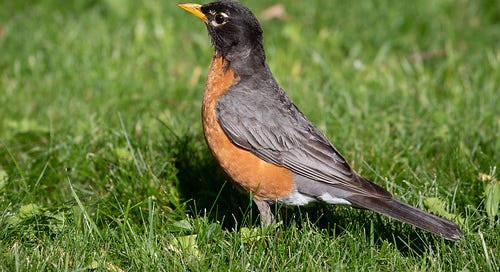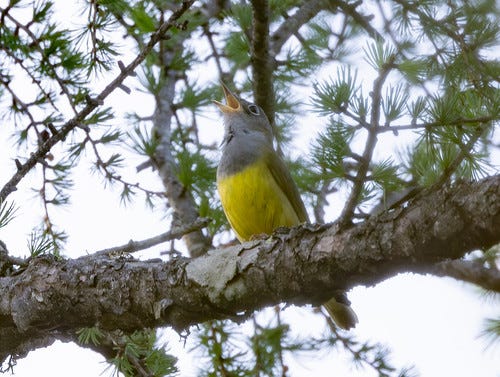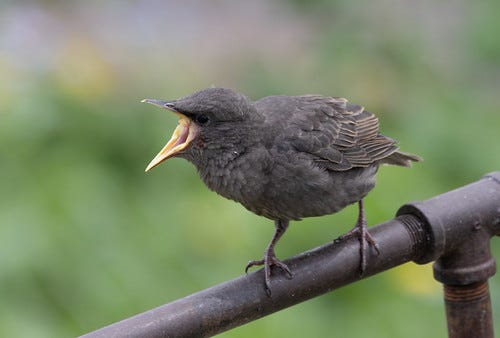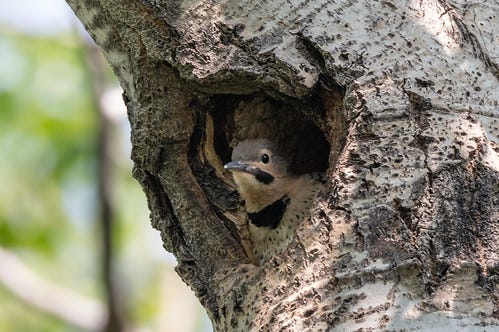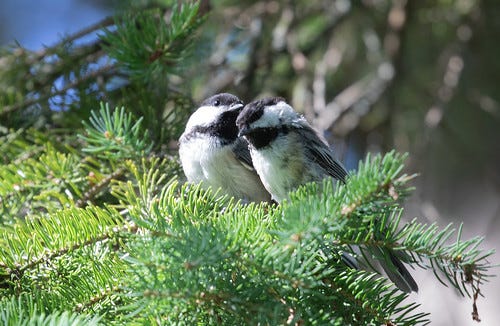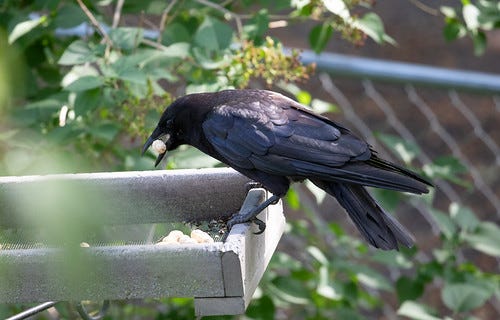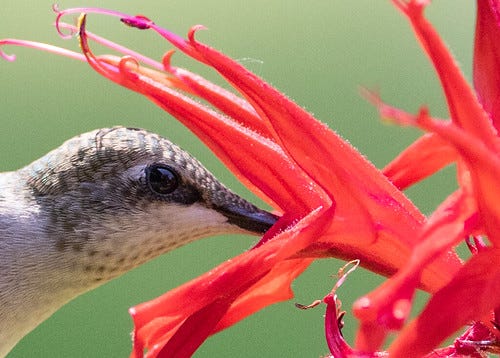(Listen to the radio version here.)
In April 2020, when my son-in-law and pregnant daughter refugeed to our house from Brooklyn, New York, due to the pandemic, I became a homebody. I usually get out a lot during spring migration, but it was fun to be so rooted to home for a few years.
I started making sound recordings of the birds in my own backyard, a practice I continued a bit last year, but this year I posted just one. With two trips to Florida, a trip to Ohio for the Biggest Week in American Birding bird festival, and the Wisconsin Society for Ornithology convention, plus babysitting for my grandson most days when I was in town, I didn’t take the time.
But I have been sitting out on my front porch early every morning, drinking my coffee and puzzling through the day’s Wordle, and based on that, this year was much quieter than the three previous years, at least as far as birdsong goes. High winds are noisy, making birdsong harder to hear not just for us humans but also for the birds themselves, and with the exceptionally windy spring, my robins didn’t bother much until the winds finally died down.
The drought has been very hard on them. Robin nests require a lot of mud, both to make them sturdy and to help them adhere to the substrate. This year, mud was in extremely short supply exactly when robins were most hormonally primed to need it. In June, just on my corner of Peabody Street, people found two different robin nests on the ground beneath conifers—the trees robins use for their first nest of the year. The grasses and other fibers were exactly right, but without mud, the nests were flimsy and must not have stuck to the branches. I have as many adult robins as usual this year, but as of today, July 11, I’ve seen just one fledgling.
Droughts impact virtually all songbirds in another way, too. Margaret Morse Nice, doing her long-term study of Song Sparrows, found one factor more than any other affected nesting success each year: rainfall. The more spring and summer rains, the more insects are produced, and Song Sparrows, like most other songbirds, feed their young insects. Robins also feed their young earthworms which stay further below the surface when the soil is dry.
House Wrens seemed to arrive late, perhaps due to the strong headwinds that also blew smoke our way from Canadian fires far to the north. Fortunately, the wrens nesting in my neighbor Jeanne’s yard seem to be doing well now.
Meanwhile, Connecticut Warblers arrived from South America late this year and were very hard to find in the bog. I heard two at a distance, not close enough to see. I used to see at least one in my yard most years during spring migration, but that was years ago. All kinds of data suggest that the species has declined by 60 percent since 1970; various surveys in Minnesota corroborate this distressing trend.
I’ve been plagued with starlings this year, and when Russ or I notice them at the suet feeder, we scare them off. For a while, just knocking on the window was enough. When they started ignoring that, we started opening the window and waving our arms. That worked for a while, too, but we finally resorted to the nuclear option, pulling out our kids’ old super-soaker high-powered squirt gun and aiming it right at them if they didn’t fly off when we opened the window. Tragically, the super soaker finally gave out, so Russ ran our hose from the basement laundry sink up to the kitchen window.
Meanwhile, our Downy and Hairy Woodpeckers seemed to figure out instantly that we would never banish them, so whether we’re knocking on or opening the window or sticking the hose out, they stick around even as the starlings flee. Right now the adult Downies are feeding fledglings.
Last week my neighbor Jeanne found a flicker nest down the block, and I got some photos and a video of the young begging and getting fed. Now they’ve fledged. The chicks usually stay hidden in a tree, but a couple times I’ve seen a parent feeding one and showing it how to find ants on the ground.
When chickadees come to the feeder, it’s easy to tell which are parents because they look bedraggled—sometimes pathetically so—while the babies chasing them and begging for food are as pretty as chickadees get.

The fledglings are old enough now that their tail feathers are full length and their yellow gape isn’t very evident. They’ll be indistinguishable from their parents as soon as the adults molt into their own fresh new feathers.
A family of crows is sticking around my corner. The parents are old friends who recognize my whistle and, most of the year, if they’re within earshot, they instantly fly in when I put a handful of peanuts in my big platform feeder. But they must not want their babies to think humans are to be trusted, so now when I go outside and whistle, the parents first lead their fledglings away and then return without them to grab the peanuts. It’s not that the adults are keeping the peanuts to themselves—whichever direction they head, I can quickly hear the young begging and getting fed.
I just set out some birdbaths a few days ago. So far the only birds I’ve noticed at them are chickadees, robins, and Blue Jays, but I expect the activity to rise as the month progresses and the first warblers start heading south. In mid- and late-summer through early fall, birdbaths are a far more effective bird magnet than feeders.
I often see my first migrating warblers when our cherries ripen, and a few are starting to turn red. Some warblers, like Tennessees and Cape Mays, eat the fruit itself, as do orioles and tanagers, but most feed on the insects gravitating to partially eaten fruits and dripping cherry juice. In the coming days and weeks, adult male hummingbirds will be passing through in big numbers. Adult females and young start migrating a few weeks later.
Even as bird song dwindles as summer progresses, more and more backyard delights will be arriving. Birdwatching is like a box of chocolates—you never know what you’re going to get, but it’s certain to be sweet.


